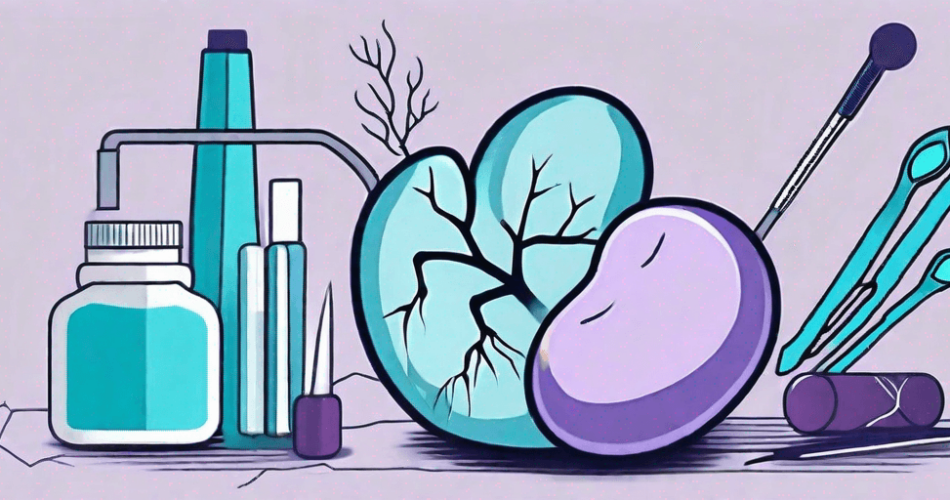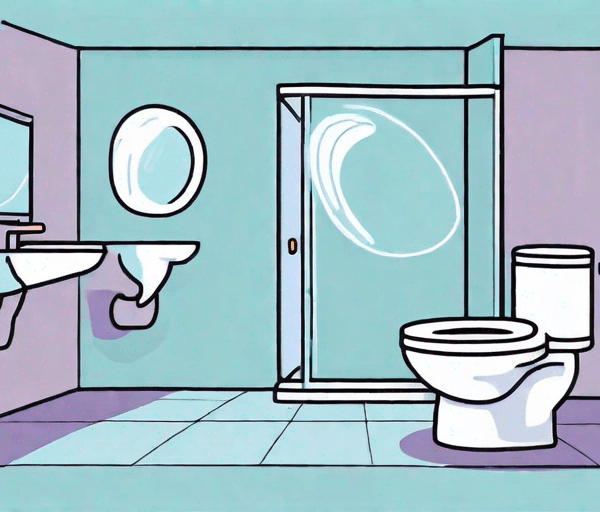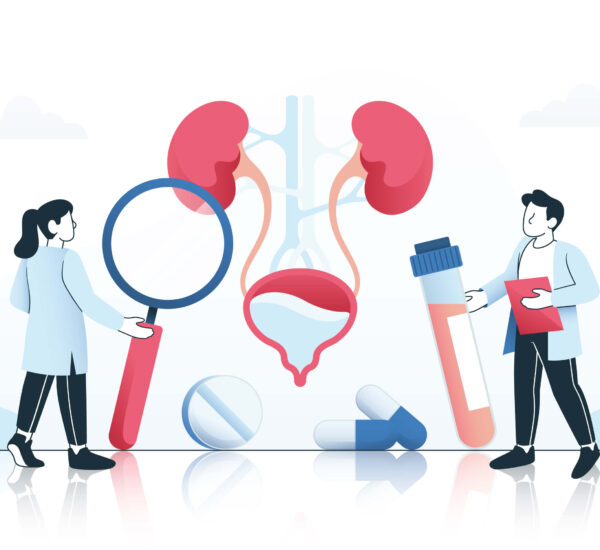Dealing with staghorn calculus, also known as, large kidney stone formation can have a serious implication in one’s health. This implication usually affects the organs in the urinary health, which can lead to malfunction if left untreated. With this possibility, it’s a must for patients to approach the necessary measure for a better overall health.
In this blog, we’ll help individuals to be more knowledgeable about the consequences of large kidney stones. Furthermore, provide possible treatment options suitable for their case. Let’s begin!
What is Staghorn Calculus

Staghorn calculus, also known as coral calculus, is a type of kidney stone that forms in the renal pelvis. It gets its name from its appearance, which resembles the branching antlers of a stag. These stones are typically large and can fill a significant portion of the kidney.
In most cases, it can occupy the renal pelvis and at least one of the calyces within the kidney. It is primarily composed of calcium salts, such as calcium oxalate or calcium phosphate, and often takes shape over a long period of time. Thus, posing challenges for treatment.
Despite being known as a large stone condition, it can still vary in size, with some stones reaching several centimeters in diameter. The size and location of the stone within the kidney can have significant implications for the patient’s health and treatment options. That’s the reason for the obstructed flow of urine, leading to urinary tract infections, kidney damage, and other complications.
With these consequences, it’s best to seek help immediately by scheduling a check up with a health professional.
The Causes of Staghorn Calculus
Understanding the causes of staghorn calculus can help individuals take preventive measures and reduce their risk of developing this condition. While the exact cause can vary from person to person, several factors have been identified as potential contributors.
Let’s gain a deeper understanding of this condition and its prevention through the following causes.
Genetic Factors
There is evidence to suggest that genetic factors can play a role in the development of staghorn calculus. Individuals with a family history of kidney stones may be more susceptible to this condition. Genetic predisposition can influence the metabolism of certain substances that form kidney stones, increasing the likelihood of staghorn calculus formation.
Research has shown that certain genes can affect the way our bodies process minerals and substances, leading to an increased risk of kidney stone formation. Understanding these genetic factors can help individuals make informed decisions about their lifestyle and dietary choices to minimize their risk.
Dietary Influences
The composition of one’s diet can also influence the development of staghorn calculus. Diets high in certain substances, such as calcium, oxalate, and uric acid, can increase the risk of stone formation. Additionally, inadequate hydration can promote the concentration of minerals in the urine, potentially leading to the formation of staghorn calculus.
It is important to note that not all dietary sources of these substances are harmful. In fact, some are essential for our overall health. However, excessive consumption or an imbalance in these substances can contribute to the formation of staghorn calculus. By understanding the role of diet, individuals can make informed choices to maintain a healthy balance of these substances.
Lifestyle Factors and Underlying Illnesses
Several lifestyle factors and underlying medical conditions can contribute to the development of staghorn calculus. Understanding and addressing these risk factors can be crucial in preventing the formation of the large stones.
Obesity
This factor can lead to an increased production of certain substances in the body that can contribute to the formation of kidney stones.
Gastrointestinal Illness
Meanwhile, gastrointestinal disorders can also affect the overall metabolism and absorption of minerals, potentially leading to an increased risk of staghorn calculus.
UTI
Furthermore, urinary tract infections can create an environment conducive to the formation of staghorn calculus. The presence of bacteria in the urinary tract can alter the pH balance and promote the crystallization of minerals, leading to the formation of kidney stones.
By addressing these lifestyle factors and underlying medical conditions, individuals can significantly reduce their risk of developing staghorn calculus. Prevention is key, which can be done by understanding the mentioned factors. Furthermore, proactive measures such as seeking consultations can help individuals maintain optimal kidney health.
Symptoms to Look Out For

The symptoms of staghorn calculus can vary, depending on the size and position of the stone, as well as individual factors These symptoms can be debilitating and significantly impact a person’s quality of life.
Common symptoms include the following:
Severe Flank Pain
This symptom is also known as renal colic, which can often be described as a sharp, stabbing pain. It radiates from the back to the front of the abdomen. The pain can be excruciating and may come in waves. In most cases, it is typically caused by the movement of the stone within the urinary tract, causing irritation and inflammation.
Urge to Urinate
Frequent urination is another symptom commonly associated with staghorn calculus. Patients may feel the need to urinate more frequently than usual, and the urgency to urinate can be intense. This symptom is a result of the stone’s presence in the urinary tract, which can irritate the bladder and increase its sensitivity.
Hematuria
Blood in the urine, also known as hematuria, is a concerning symptom that should not be ignored. The presence of blood in the urine can be visible to the naked eye or detected through laboratory tests. Staghorn calculus can cause microtrauma to the urinary tract, leading to bleeding and the appearance of blood in the urine.
If you experience any of these symptoms, it is important to consult a healthcare professional for further evaluation. They will conduct a thorough assessment and recommend appropriate diagnostic tests to confirm the presence of staghorn calculus. It can be done through online consultation or a physical check up.
Medical Tests and Procedures
When diagnosing staghorn calculus, healthcare professionals may utilize a combination of imaging tests, such as ultrasounds, CT scans, and intravenous pyelograms. These tests allow for visualization of the stone and assessment of its impact on kidney function.
In addition to imaging tests, a urine analysis may also be performed to identify any underlying metabolic abnormalities. This involves collecting a urine sample and analyzing it for the presence of certain substances that may contribute to the formation of staghorn calculus. By identifying these abnormalities, healthcare professionals can develop a comprehensive treatment plan that addresses the underlying causes of stone formation.
However, most of these procedures can be expensive for some patients. Patients are encouraged to utilize their HMO plans for smoother transaction when needed.
Treatment Options for Staghorn Calculus

Once diagnosed, appropriate treatment measures can be implemented to manage staghorn calculus effectively. The choice of treatment depends on various factors, including the size, location, and composition of the stone, as well as the individual’s overall health.
Medication and Non-Surgical Treatments
In some instances, staghorn calculi can be managed non-surgically through the use of medications and lifestyle modifications. Certain medications can help dissolve or reduce the size of the stone, making it easier to pass naturally. Additionally, dietary changes and increased fluid intake can play a significant role in preventing stone recurrence.
Surgical Interventions
If the stone is large or causing severe symptoms, surgical intervention may be necessary. In such cases, urologists may employ various procedures, such as percutaneous nephrolithotomy, shock wave lithotripsy, or ureteroscopy, to remove or break down the stone. The choice of surgical approach depends on factors such as stone size, location, and the overall condition of the patient. Close follow-up and preventive measures are essential after surgical intervention to minimize the risk of stone recurrence.
The Implications of Staghorn Calculus
Staghorn calculus can have significant implications for kidney function and long-term health. It is important to understand and address these implications to ensure optimal outcomes for individuals affected by this condition.
Impact on Kidney Function
Due to the size and location of staghorn calculi, these stones can impair kidney function by obstructing the urinary tract and causing inflammation. If left untreated, this can lead to chronic kidney disease or even kidney failure. Timely diagnosis and appropriate management are crucial to preserve kidney function and prevent complications.
Long-Term Health Consequences
Individuals with a history of staghorn calculus may be at an increased risk of developing recurrent kidney stones. Therefore, long-term preventive measures, such as dietary modifications, fluid management, and regular follow-up with healthcare professionals, are essential. Additionally, individuals with staghorn calculus should be aware of the potential impact on their overall health and seek appropriate medical support as needed.
Final Takeaway
Understanding how this complex condition can potentially implicate the kidney function is crucial for long-term health planning. We’ve discussed the causes, diagnosis methods, and treatment options, individuals can take to reduce their risk and manage the condition effectively. With the available information, it can help patients to select reasonable choices for their urinary health.
If you have concerns or experience symptoms associated with staghorn calculus, it is important to consult a healthcare professional for a thorough evaluation and personalized treatment plan. Book an online consultation with a urologist today!



